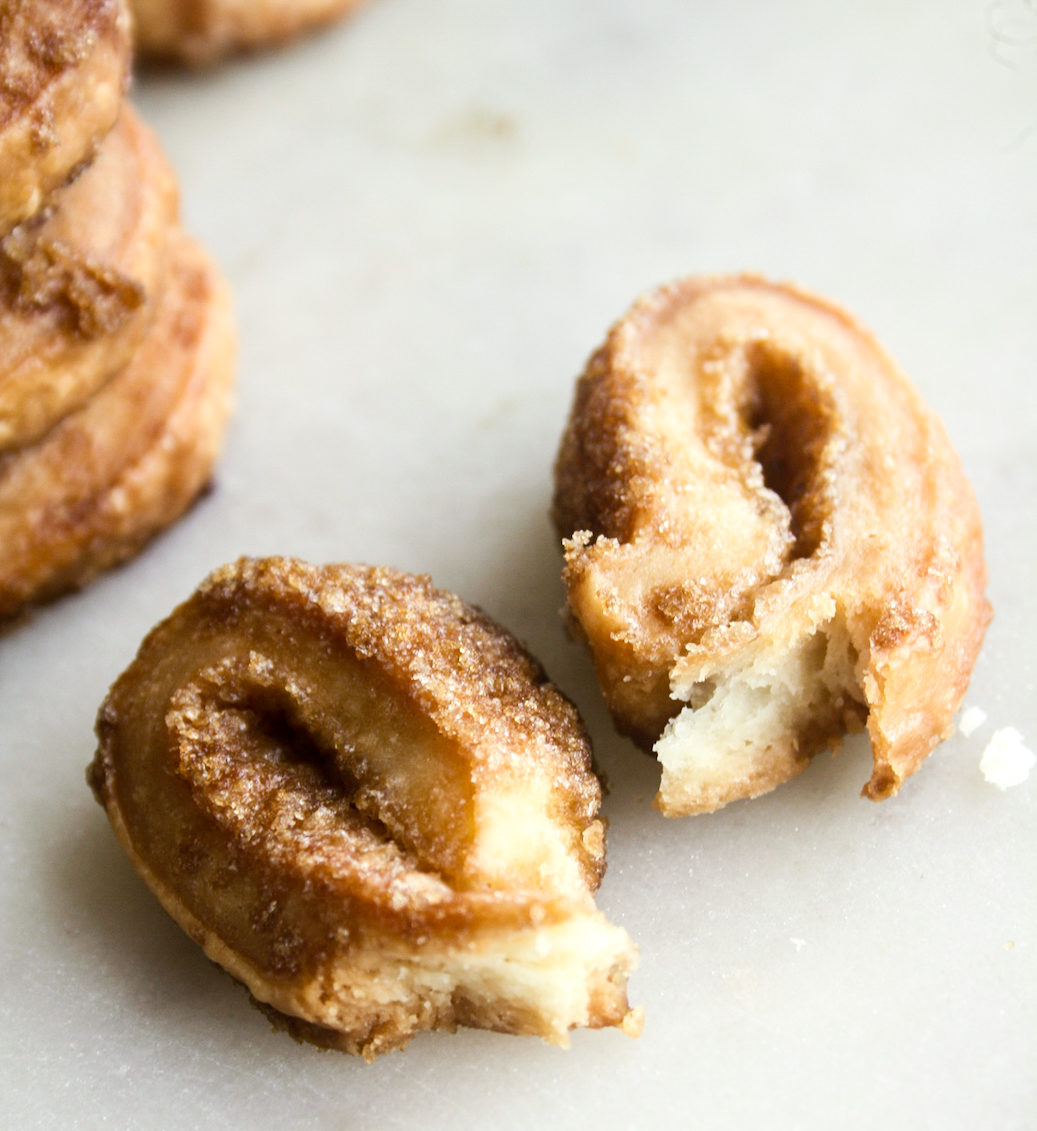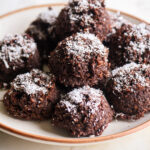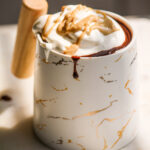Meet the funnest cookies you’ll ever eat! Palmiers are French cookies made with puff pastry and sugar, layered and folded to create a palm leaf shape or ‘elephant ear’ shape. Once you have your puff pastry (homemade or not), these cookies come together in five minutes and look and taste so good, it’s like you’ve worked on them for weeks. They are crunchy, flaky, sweet and slightly salty and ridiculously addictive!
 I had half a batch of puff pastry leftover from last week and I can’t remember how the idea of making palmiers entered my head but I’m so glad I did! It just took a few quick rolls and folds and the cookies were in the oven. I baked them till they were super browned and crunchy and they didn’t soften at room temperature despite the current humidity. Yay!
I had half a batch of puff pastry leftover from last week and I can’t remember how the idea of making palmiers entered my head but I’m so glad I did! It just took a few quick rolls and folds and the cookies were in the oven. I baked them till they were super browned and crunchy and they didn’t soften at room temperature despite the current humidity. Yay!

I used a soft, light brown sugar for these cookies and it melts down into a lovely caramel-like flavour. You can use whatever sugar you like here, a coarser white or brown sugar is great for extra crunch. Any fine sugar will simply melt a bit faster but it will taste unbelievable either way. The rolled up cookies split into this heart shape form on their own in the oven and I love it when almost no work leads to such a great end result!

Palmiers are eaten with tea or coffee and I can see why, but honestly, I had a hard time not gobbling them up just standing in the kitchen waiting for them to cool. They smell amazing and break apart into flaky, buttery, crunchy layers. For a cookie that has literally just butter, flour and sugar, these taste disproportionately good!

I hope you’ll make a batch today!
Please read the recipe notes before beginning.

Homemade Palmiers
Ingredients
- 1 cup + 2 tbsps all-purpose flour (and more for sprinkling as needed)
- 1/2 tsp salt
- 3 tbsps caster sugar
- 140 gms unsalted butter, cold and cubed (10 tbsps)
- 1/4 cup ice water
- 10 tbsps brown sugar (see notes)
Instructions
- In a mixing bowl, combine the flour, salt and sugar. Stir, then add the cubed butter. Rub the butter into the flour with your fingertips until there are still pea-sized bits of butter throughout the dough and there's no dry flour left. Do this as quickly as you can so that butter doesn't soften too much.
- Pour in the ice water and bring the dough together with a silicone spatula. It will be quite soft. Don't overwork it, just form it into a rough mass, and place it on a silicone baking mat. Shape into a disc that's about an inch high, then cover the dough with clingfilm and chill for 1 hour.
- Uncover the dough, lightly sprinkle the top with flour, then place the sheet of clingfilm back on top. Roll the dough over it unto a roughly 10x6 rectangle, but precision isn't important. It's more important to make sure you're rolling it out evenly. The clingfilm helps to prevent any butter or flour from sticking to the rolling pin.
- Remove the clingfilm and now fold the bottom half of the dough to the center, and fold the top half over it, like a letter. If you're doing this on a silicone mat, just lift the edges of the mat itself to help with the folding. Chill the folded dough for 10 minutes.
- Now rotate the dough ninety degrees (or just rotate the mat), and roll out again into a roughly 10x6 rectangle. Fold again, rotate and roll. Repeat this fold-rotate-roll routine 6 to 8 times at least. This is where you're ensuring the puff pastry has multiple flaky layers. As you work, you'll find the dough becoming more pliable and less sticky with every fold. Keep chilling the dough as needed, by sliding the mat onto a baking tray and placing it in the fridge every time the dough warms up. Keep sprinkling flour as needed during this process, but lightly sprinkle it.
- When your final roll is done, fold the dough up again the same way, cover with clingfilm and chill for at least two hours, or overnight.
- Unwrap the chilled dough and cut it in half. It becomes easier to work with one part at a time since the palmiers need room to spread and you'll be baking in batches. Wrap up the other half and place it back in the fridge.
- Roll the dough out into a 10x6 rectangle (use your fingers to shape it if needed) on a silicone mat, lightly flouring the top or place a sheet of clingfilm over the top to prevent sticking. Make sure the short side of the rectangle is facing you.
- Now sprinkle two tablespoons of the sugar all over the dough, pressing it in lightly with your fingers. Lift the long sides of the dough up and fold them to meet in the center.
- Sprinkle another two tablespoons of the sugar over the dough in the same way. Now lift the right side of the dough over the left, covering it completely. You will have a long, thin piece of dough (refer video linked in the notes below).
- Slide the mat onto a baking tray (this is why I prefer mats always, rather than rolling dough directly on a kitchen counter because they make transferring the dough to the fridge so much easier). Cover the dough loosely with clingfilm and chill for 30 minutes.
- Preheat the oven to 190 C.
- Remove the clingfilm and lift the mat out onto the kitchen counter again. Cut the dough into 10 to 12 equal pieces, about an inch wide. Place them cut side up on the same mat, making sure there are 2 inches between each piece. For extra crunch, sprinkle the cookies with a bit more sugar again.
- Bake for 20 to 25 minutes until deeply browned, puffed and slightly split to form the 'heart' shape (or pig ears or elephant ears or palm leaves!). Some of the sugar may have melted but don't worry about it. As it cools and hardens, the melted sugar forms the most delicious caramel bits in the cookies!
- Let the palmiers cool on the baking tray for 10 minutes, then place on a wire rack to cool completely. They will firm up a bit more as they cool. Repeat this process with the remaining half of dough.Store in an airtight tin at room temperature for one week, or longer in less humid weather.
- Happy baking!
Notes
Shop this recipe!
Check out a full list of my baking essentials here!
This post contains affiliate links.














